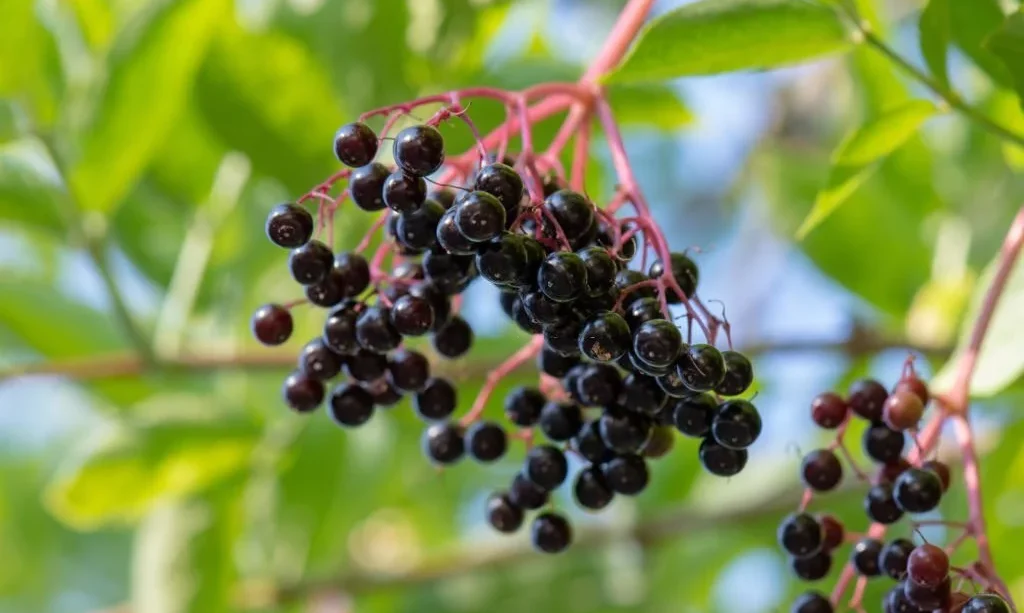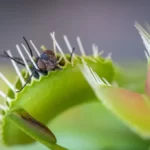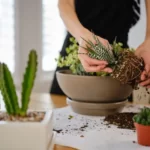Get ready to unlock the secrets of propagating elderberry plants! Elderberry is a versatile and beautiful plant that can bring a touch of nature’s magic to your garden. In this guide, we’ll explore the art of elderberry propagation, where you can learn how to grow more plants with ease. Whether you want to expand your garden or share the bounty with others, propagating elderberry is an exciting and rewarding endeavor. Let’s dive in and discover the wonderful world of elderberry propagation!
- 1,000 Seeds Minimum Per Packet – BIG PACK
- American Elderberry Seeds – Sambucus canadensis
- EDIBLE FRUIT – Edible Hedge Shrub With Fruits – FRAGRANT EDIBLE FLOWERS
- Zones 3 – 9
- These seeds are from a Northern range collection which are more cold hardy than Southern range collection
Elderberry Propagation
Before we dive into the propagation methods, let’s understand the basics of elderberry propagation. There are two common ways to propagate elderberry plants: from cuttings and from seeds.
- Propagating from Cuttings: This method involves taking a small section of a healthy elderberry plant and encouraging it to root and grow into a new plant. Cuttings are typically taken in late winter or early spring when the plant is dormant. This method allows you to create exact clones of the parent plant.
- Propagating from Seeds: Another way to propagate elderberry is by collecting and germinating its seeds. Elderberry seeds require a process called stratification, which mimics the natural conditions needed for germination. This method allows for genetic diversity as each seed has the potential to produce a unique plant.
Both methods have their advantages and challenges, and the choice depends on your preferences and available resources. Now that we have a basic understanding of elderberry propagation, let’s dive deeper into the specific steps and techniques involved in each method. Get ready to unlock the secrets of growing your very own elderberry plants!
- Bontone rooting powder from Bonide promotes quick root development from cuttings once applied; to apply, simply dip the end of a clipping into the powder and then place it in moist soil to help the rooting process of cuttings
- Not exclusive to cuttings, use this on seeds or bulbs by placing them in a bag with some powder and shaking the bag gently to coat the seeds or bulbs
- Plant growth hormone stimulates root production in hardwood and softwood cuttings; apply to ornamentals, vegetables, fruit trees, and berries
- Designed for use on azaleas, mums, geraniums, pachysandra, poinsettias, and a wide range of other plants in your home, lawn and garden
- Ready-to-use rooting powder is ideal for use when transplanting seeds, bulbs, corms and roots of listed plants
Propagating Elderberry from Cuttings
Let’s roll up our sleeves and learn how to propagate elderberry from cuttings! This method allows us to create exact replicas of our favorite elderberry plants. Here’s how it’s done:
- Selecting Healthy Cuttings: Look for healthy, disease-free branches on the elderberry plant. Choose young, flexible shoots that are about 6-8 inches long.
- Preparing the Cuttings: Using clean and sharp pruning shears, make a clean cut just below a leaf node (where a leaf emerges from the stem). Remove any lower leaves, leaving only a few leaves at the top.
- Rooting the Cuttings: Fill a small container with a well-draining rooting medium, such as a mixture of perlite and peat moss. Dip the cut end of the elderberry cutting into a rooting hormone (optional but can improve rooting success). Make a small hole in the rooting medium and insert the cutting, gently pressing the medium around it. Keep the soil slightly moist and place the container in a warm and bright location, but avoid direct sunlight.
- Providing Care: Mist the leaves occasionally to maintain humidity around the cutting. Ensure the soil remains moist but not waterlogged. In a few weeks to a couple of months, roots will begin to develop. You can gently tug on the cutting to check for resistance, indicating that it has successfully rooted.
Now you have a rooted elderberry cutting ready to grow into a new plant! Take pride in the fact that you’ve created a perfect clone of the original elderberry plant.
Propagating Elderberry from Seeds
If you’re feeling adventurous and want to explore the genetic diversity of elderberry, propagating from seeds is the way to go. Let’s discover how to grow elderberry plants from seeds:
- Collecting and Preparing the Seeds: Collect ripe elderberries and gently remove them from the stems. Crush the berries and extract the seeds. Rinse the seeds to remove any pulp or debris. Some seeds may require scarification (scratching or nicking the hard seed coat) to improve germination rates.
- Stratification Process: Elderberry seeds need stratification to break their dormancy and stimulate germination. This mimics the natural process of the seeds experiencing cold temperatures. To stratify, place the seeds in a moistened paper towel or a container with moist sand or vermiculite. Seal the container or wrap the paper towel in a plastic bag and store it in the refrigerator for about 2-3 months.
- Planting the Seeds: After the stratification period, sow the elderberry seeds in containers filled with well-draining potting soil. Plant the seeds about half an inch deep and cover them lightly with soil. Water gently to ensure the soil is moist but not soaked.
- Providing Care: Place the containers in a warm and bright location, but avoid direct sunlight. Keep the soil consistently moist. Germination may take a few weeks or longer, so be patient. Once the seedlings have developed a few sets of leaves, you can transplant them into larger pots or into the ground.
By following these steps, you’ll have a collection of young elderberry plants ready to thrive and delight you with their growth and beauty. Whether you choose cuttings or seeds, the journey of propagating elderberry is a rewarding one. So, let’s get started and watch our elderberry family grow!
- FOR USE ON: Use Berry-tone organic fertilizer for all berries including blueberries, strawberries, raspberries, and blackberries
- CONTAINS: Berry-tone is a rich blend of the finest natural & organic ingredients enhanced with our exclusive Bio-tone formula; 4-3-4 Fertilizer analysis with 5% Sulfur. Berry-tone is environmentally Safe – No sludges or toxic ingredients
- WHEN / HOW TO USE: Best to use Berry-tone fertilizer when planting or feeding established plants; most berries are best fed twice each year in early and late Spring. Berry-tone is ready to use and requires no mixing
- FOR ORGANIC GARDENING: Berry-tone is approved for organic gardening; It is a registered Organic Input Material meaning it meets all requirements for organic production
- MADE IN THE USA: Product of the Espoma Company. The leader in natural organics since 1929
Aftercare for Propagated Elderberry Plants
Congratulations on successfully propagating your elderberry plants! Now, let’s ensure they continue to thrive with proper aftercare. Here’s what you need to do:
- Watering: Keep the soil around your propagated elderberry plants consistently moist but not waterlogged. Water deeply and regularly, especially during dry spells. Elderberries appreciate moist soil, but they don’t like to sit in water.
- Sunlight: Elderberries love sunlight! Make sure your plants receive at least 6-8 hours of direct sunlight each day. Place them in a location where they can soak up the sun’s rays and grow vigorously.
- Soil and Fertilizer: Elderberries prefer well-draining soil with a pH between 5.5 and 6.5. If the soil is heavy or clayey, amend it with organic matter to improve drainage. Fertilize your plants with a balanced, slow-release fertilizer in spring to provide essential nutrients.
- Pruning: As your propagated elderberry plants grow, pruning becomes important. In early spring, remove any dead or damaged branches. You can also prune to shape the plant and encourage better air circulation. Pruning helps promote healthy growth and better fruit production.
Transplanting Propagated Elderberry Plants
Once your propagated elderberry plants have grown into sturdy young plants, it’s time to transplant them into their permanent locations. Follow these steps:
- Choosing the Right Spot: Select a sunny location with well-draining soil for your elderberries. Make sure the area provides enough space for the plants to grow and spread, as elderberries can become quite bushy.
- Digging the Hole: Dig a hole that is wide and deep enough to accommodate the plant’s root ball. Ensure the hole is slightly wider than the root spread to allow room for future growth.
- Planting: Place the elderberry plant in the hole, making sure the root collar (where the stem meets the roots) is level with or slightly above the ground. Backfill the hole with soil, gently firming it around the roots. Water thoroughly to settle the soil.
- Mulching: Apply a layer of organic mulch, such as wood chips or straw, around the base of the plant. This helps retain moisture, suppress weeds, and protect the roots from temperature fluctuations.
Conclusion
By propagating elderberry plants, you’ve unlocked the secret to growing more of these wonderful shrubs. With proper aftercare, your propagated elderberries will flourish and reward you with their beautiful foliage and tasty fruits.
Remember to provide adequate water, sunlight, and well-draining soil. Regular pruning and maintenance will ensure the plants stay healthy and productive. When the time comes, transplanting your propagated elderberry plants into their permanent spots will allow them to grow and thrive for years to come.
Enjoy the process of watching your propagated elderberries grow and flourish. Soon, you’ll be rewarded with bountiful harvests and the satisfaction of having created new plants. So, grab your gardening tools, nurture your elderberry plants, and revel in the joy of growing your own elderberry family!







